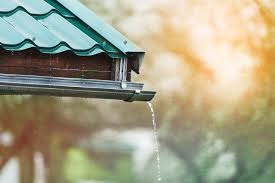How to harvest rainwater at your home?
The water that we drink today is probably that’s been here even when the dinosaurs were around. The freshwater that we see is relatively scarce. The supply of freshwater is vital to support life, ecosystems, and civilizations.

70% of the world is covered by water out of which 97.5% is salt-water and we only have 2.5% of freshwater. Out of this 2.5% freshwater, only 1% is accessible as the rest is trapped in snowfields and glaciers. The scarcity of water comes with the low availability of freshwater. This is escalated by water pollution caused by humans. The only solution to save water is rainwater harvesting.
Rainwater harvesting does not require energy resources for it to function and hence is the best sustainable solution. It protects and conserves the natural habitat and does not deplete the natural resources.
Steps for building an RWH system
Rainwater harvesting potential
The amount of rainfall that could be collected in the area is known as rainwater harvesting potential. Multiplying your annual precipitation by the surface area available to collect the rainwater is how you calculate it.
The catchment of the RWH system is the surface that gets the rainfall. This can be your courtyard, open ground, or terrace. The catchment contributes rainwater to the harvesting system.
Setting up the storage
After collecting the rainwater from the roof of the building, it is diverted into a storage tank. This storage tank is designed by keeping in mind the rainfall, water requirements, and catchment availability.
The drain pipe or collecting system should have:
- A filter at the mouth of the pipe.
- A roof washer will divert the first flow away from the tank.
- An excess water overflow system.
- An air gap so that stormwater backflow can be prevented.
Rainwater harvesting not only saves water but also saves energy that is required while transporting and distributing the water at the doorstep. Many times, groundwater is extracted to meet the demand of freshwater, harvesting rainwater conserves the groundwater.
Features in the system
- First flush diverters: This device is used to flush off the contaminated water received from the first showers.
- Filters: After the first flush, it is essential to pass the water through the filters. These filters prevent dust, silt, leaves, and other things to enter the storage tank.
- Check for contamination: One should ensure if the catchment is absolutely suitable for collecting the water. Trim any overhanging vegetation.
Installing the tanks and pipes
For installing pipes:
- Take permission from the authorities before doing so.
- If laid underground, dig trenches.
- In order to avoid the collection of sediments, have the pipe as a single fall.
- Ensure to lay the pipes in the trenches or connect them using connectors.
For installing Tanks:
- Make a tank stand according to your building.
- Place the tanks on the stand and ensure they are sturdy.
- Connect these tanks and install a valve for maintenance purposes.
- Install the first flush diverters and filters.
- Make an arrangement in case of overflow.
- A tank gauge can monitor your usage.
For installing pumps:
- In order to distribute the water, use a pump for watering the garden.
- Ensure the pump is of the right size.
- By using pressure couplings, maintain adequate pressure.
- Check if the entire system works and if the water flows into the tanks.
- Prevent any algae growth.
- To block the sunlight, install a solar shield.
Rainwater harvesting has proven to be a solution to a lot of water problems faced in Mumbai and its suburbs. Mumbaikars have finally understood the importance of water and saving it. To ensure that Mumbai is self-reliant on water, more steps need to be taken.
Disclaimer: The views expressed above are for informational purposes only based on industry reports and related news stories. PropertyPistol does not guarantee the accuracy, completeness, or reliability of the information and shall not be held responsible for any action taken based on the published information.




